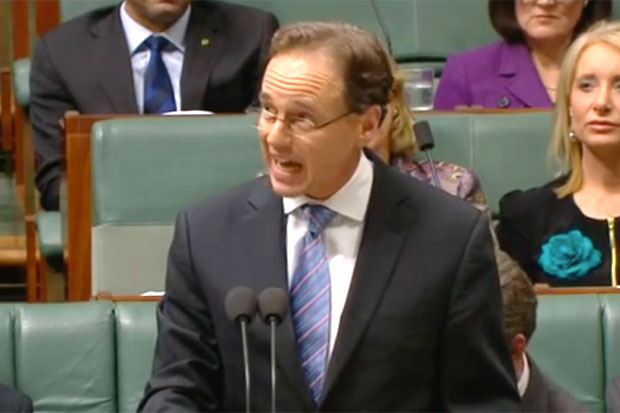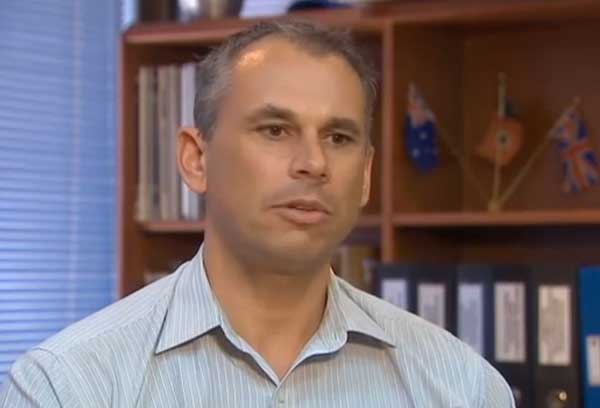When news broke in early May that a major port intended to supply the Northern Territory’s offshore oil and gas industry had been constructed on the waters of the pristine Tiwi Islands without any environmental assessment, Environment Minister Greg Hunt put on an uncharacteristically animated performance for the news cameras.
“If further action needs to be taken we will take it without fear or favour, no matter where the blame lies,” Hunt vowed as a media storm brewed around the mysterious $130 million port development on the largest of the Tiwi Island group, Melville Island, around 80 kilometres from Darwin.
The Minister ordered the development be investigated “as a matter of priority”. He seemed as shocked as everyone else to learn that a major port, replete with a 30 million litre diesel storage facility – reportedly 15 per cent of the Territory’s total capacity – and a 150 person accommodation camp, was all but complete despite having not been subjected to any formal environmental assessment.
Hunt’s strong reaction is understandable: The Tiwi Islands provide habitat for 38 species listed as threatened under national or Territory law and are an internationally significant breeding ground for turtles.
But documents obtained by New Matilda, combined with the substantial information that is already on the public record, reveal that the gung-ho construction of Port Melville actually came as a surprise to few in government, and not least of all to Hunt’s department.
Like the bungled approval of what would be Australia’s largest ever coal mine — Adani’s Carmichael mine in the Queensland Galilee Basin — the troubling deficiencies in environmental checks and balances which surround the Melville Island port stem largely from the incompetence of the Department of Environment (DoE).
But rather than own up, the Abbott Government has spent a good part of the last fortnight attacking conservationists over its defeat in the Federal Court on Carmichael, which revealed that Minister Hunt failed to properly apply national environmental law by not considering conservation advice relating to two threatened species that will be impacted by the mine.

Attorney General George Brandis announced plans to change the law to restrict the community’s right to access it, and to challenge legally flawed government decisions. He launched his own personal ‘jihad’ against green groups, which he said were waging a campaign of “vigilante lawfare” designed to “game the system” despite the fact government solicitors conceded defeat before the case even went to trial.
But while the Commonwealth was keen to publicise and seek advantage from its cock up in the Carmichael case — which ultimately saw the mine’s federal approval rescinded by the courts — it was less keen to broadcast its failure to act as construction of Port Melville ramped up late last year and into 2015.
On Tuesday, New Matilda revealed that the DoE sat on its hands for months as Singaporean company Ezion Holdings Limited, which was later replaced as the port developer by another Singaporean company called Ausgroup Limited, recruited more than 70 workers to construct Port Melville in late 2014.
It’s a monumental mistake that the department’s Assistant Secretary, Shane Gaddes, blamed on overworked staff.
“In December, the case was transferred to the Investigations Section [within the DoE]due to the high workloads in the Compliance Section,” Gaddes revealed in a briefing to Hunt in early May.
“Throughout December 2014 there was email correspondence between the Investigations Section of the Department and Ezion with several environmental reports being provided.
“The information in these reports is limited and the Department considers that the assessment of potential impacts on matters of national environmental significance within these reports is inadequate.
“At this point the department should have issued another show cause letter to Ezion Holdings. However as the case had been transferred to another section due to workloads, this did not occur.”
In fact, despite the DoE having an extensive and long-running knowledge of Ezion’s plans, it effectively did nothing to source adequate information until the media kicked up a stink in early May this year.
To be fair, the DoE has suffered cuts of 491 staff, or more than 16 per cent of its workforce since April 30, 2012. But while the consequences could be grave, the mistake was very simple — the government simply failed to ask for more information and the port was built in spite of the department’s concerns conceded in its internal documents.
A quick look over what is on the public record would have helped.
To start with the most blindingly obvious, the Northern Territory’s Chief Minister Adam Giles had issued a media release in March this year that telegraphed the fact that, “Once complete, the facility will…operate as a marine supply base to offshore oil and gas projects in the region”.
The port, Giles’ proclamatory press release pointed out, “will include a wharf, laydown areas, fuel storage, workshops, office facilities, wash-down facilities and a 119 person accommodation camp, with the capacity to be expanded to a 150 person facility if needed”.
It would be equipped with floodlights to allow it to operate 24-hours a day, retain an on-site workforce of 50 employees, and has plans to facilitate 44 shipping movements of vessels up to 200 metres long each month in 2015.
Had they gone with the more forensic option, the DoE might have noticed that the company which originally developed the port, Ezion Holdings, had registered an Australian subsidiary by the name of Ezion Offshore Logistics Hub (Tiwi) Pty Ltd in September 2010.
A month earlier, the company had proudly announced to the Singapore stock exchange that it had entered into a memorandum of understanding to lease the land on which Port Melville is built.
Why? To develop “a marine supply base to support the offshore oil and gas industry in the vicinity”.

The Tiwi Land Council, which controls the land Port Melville stands on, had also been active in advertising its intention to join forces with Ezion.
As early as 2012 it was publicising the development in a newspaper it puts out every two months, which reported that “an internationally renowned engineering company [had]been commissioned to report on how Port Melville could develop to support the various development proposals for the oil and gas industry”.
The confusion within DoE may partly be explained by the fact there had been a wharf at the site on Melville Island since 2003, but it was designed only to service the island’s small forestry industry and had been destroyed by a cyclone in 2007.
Warnings that the apparent rebuilding of that wharf was actually the forerunner to a much larger scale project had been coming in since July 2013, though, when the Northern Territory Environmental Protection Agency wrote to express its concern to the DoE.
As a result, in August 2013, the DoE launched an investigation into those concerns, but it had been dropped by October after Commonwealth officials made a site visit and concluded that the construction work appeared to be consistent with claims that what was being developed was merely a rejuvenation of the destroyed forestry wharf.
In the course of that investigation the Tiwi Land Council, which New Matilda revealed yesterday is now subject to an investigation (along with Ezion) over whether it provided ‘false and misleading information’ to investigators, moved to placate the DoE.
“Rest assured that if Tiwi proceed with the development of a marine supply base on Melville island, we will seek any approvals that may be required under [national environmental law],” the Tiwi Land Council said in response an official request for information.
This they did not do, and after the investigation was re-opened in December 2014 following questions in Parliament from Labor Senator Nova Peris, the Tiwi Land Council directed the department to Ezion, who it said was responsible for taking the action.
As has been mentioned, the department’s investigation then lapsed into the embarrassing paralysis which had remained secret until New Matilda revealed the bungle yesterday.
The documents New Matilda has obtained also reveal that a journalist at The Australian, Amos Aikman, claims the company which now operates the port, Ausgroup Limited, had been told the government was unfazed by the port development, which was almost complete by that time.
According to Aikman, Ausgroup had told him that in the course of its December investigation “the DoE [had]verbally told them it’s happy.”
The company had also said, according to Aikman, that “it’s dealt directly with Greg Hunt’s office and that one of Minister Hunt’s advisors has told them that the minister’s office is happy with the process, too”.
The Department of Environment, Minister, Tiwi Land Council, and the port’s operating company have all refused to comment on their involvement in the development of Port Melville, but given the government’s recent form it seems likely that what Aikman said is true, and the government would have been all too happy to turn a blind eye if the media hadn’t kicked up a stink.
* New Matilda is pursuing more documents in relation to this matter, and our investigation is ongoing. If you appreciate this sort of journalism, pleaser consider donating to help us ‘keep the bastards honest’, or subscribing. You can ‘like’ our Facebook here for more news updates.
Donate To New Matilda
New Matilda is a small, independent media outlet. We survive through reader contributions, and never losing a lawsuit. If you got something from this article, giving something back helps us to continue speaking truth to power. Every little bit counts.




